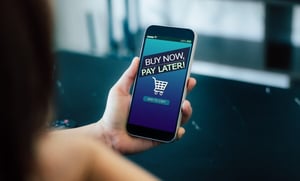In a recent study, Redseer Strategy Consultants shared that the use of Buy Now, Pay Later (BNPL) services is on the rise in the Middle East. Interestingly, the UAE and the Kingdom of Saudi Arabia (KSA) outscored their regional peers.
Charting the growth of the BNPL industry in the region, Redseer notes that in 2022, one in 10 consumers was using BNPL services. But by 2023, this figure had doubled, with one in five consumers now using BNPL options for online transactions.
What’s so special about BNPL?
Deconstructing the popularity of BNPL in the region, Said Murad, senior partner at Global Ventures, says that around 55 percent of the region’s population is under the age of 30. He argues that these services appeal to a younger, tech-literate population as they offer an easy, interest-free mechanism for payments.
On a broader scale, BNPL contributes to financial inclusion, says Murad. It provides access to individuals who don’t necessarily have a way to traditional financial institutions.
“BNPL offers an accessible and affordable way to access credit for many,” says Murad. “It is commercially competitive and relatively more accessible to consumers.”
Sandeep Ganediwalla, author of the report and partner at Redseer, says BNPL provides consumers convenience and transparency. At the same time it also allows them to budget their expenses.
Read: Saudi Central Bank sets guidelines for BNPL companies, fueling fintech growth
“There is mostly zero interest rate and no requirement of credit score,” says Ganediwalla. “Also, some BNPL options are Sharia-compliant, appealing to local consumers.”
What’s in it for businesses?
Ganediwalla says for businesses, BNPL helps attract new customers while also increasing their average spending by increasing affordability amongst consumers.
“BNPL has also helped improve conversions as it simplifies the checkout process and potentially reduces cart abandonment,” says Ganediwalla.
Murad says by integrating BNPL services, retailers equip themselves to cater to the region’s younger demographic. This helps propel the region’s e-commerce growth as BNPL makes online shopping much more appealing and accessible to all.
Looking at it from another perspective, Murad says BNPL makes a lot of sense for a region like the Middle East where many consumers are unbanked or underbanked. Thanks to BNPL these individuals can make purchases they might otherwise be unable to make.
“Also the shift towards digital payment methods enables merchants to understand their customer base better, and to cater towards them in a more intentional way,” says Murad.
What makes the UAE and KSA special
According to the study, one of the factors for the growth of the service in the UAE and KSA is the consolidation of the market, which is dominated by two major players: Tabby and Tamara.
But there are other factors at play as well.
Read: The Middle East is on the cusp of a digital payments revolution
Ganediwalla explains that the UAE and KSA population is tech-savvy and has a high banking penetration. However, credit card penetration in these regions has been low, especially in KSA. “This has created an opportunity for BNPL players and hence its increased adoption in the region,” says Ganediwalla.
Murad believes another key factor is that BNPL is mobile-friendly. This bodes well for a region where internet penetration is high, reaching almost 99 percent in the UAE and KSA. Murad believes the growth of BNPL also ties in with the rapid pace of digital transformation in the two countries.
“With the growth of fintech in the region, BNPL services are part of a broader shift towards a cashless society,” says Murad.
He says fintech has increasingly attracted the lion’s share of funding in the MENA market. Of the $925 million funding in 2022, lending services, the umbrella covering Buy Now Pay Later was the second most funded vertical.
“Additionally, the shift in consumer habits from cash-on-delivery towards digital payments was significantly enabled through the introduction of BNPL services on to e-commerce platforms,” says Murad.
For more on technology, click here.








